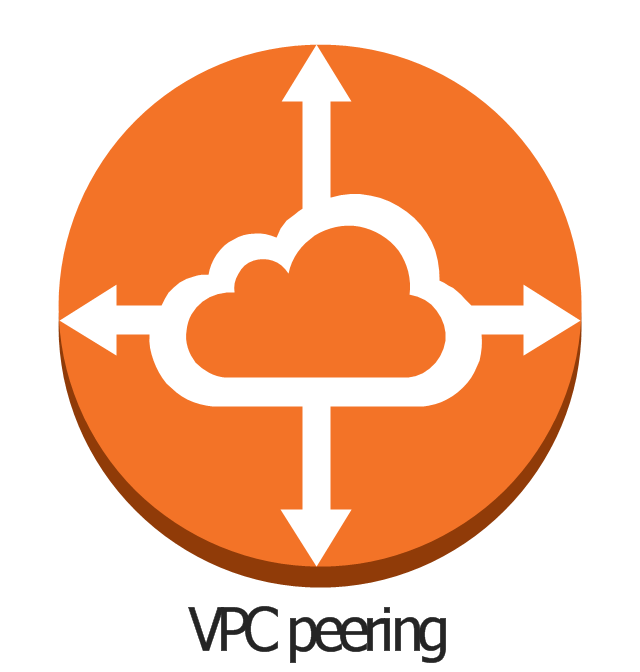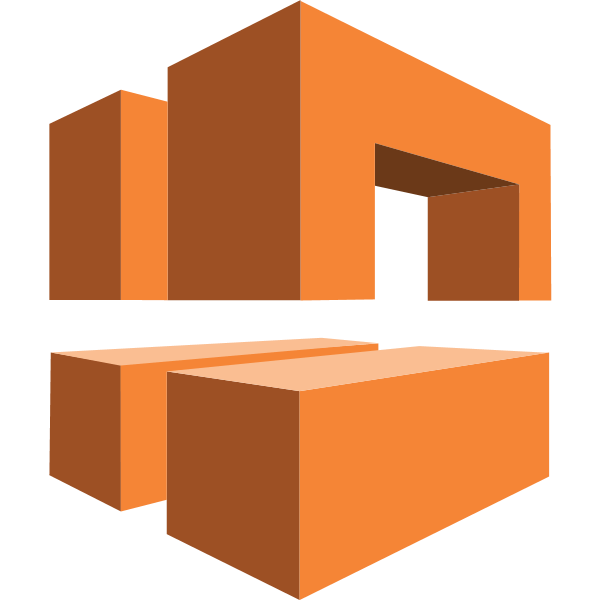Cloud computing has revolutionized the way businesses manage and deploy their IT infrastructure, and Amazon Web Services (AWS) stands at the forefront of this transformation. Among its many offerings, AWS Virtual Private Cloud (VPC) plays a critical role in creating secure and isolated environments for network operations. If you're looking to explore remoteIoT VPC download AWS capabilities, you're in the right place.
This article will provide an in-depth analysis of how to leverage AWS VPC for remoteIoT deployments, ensuring secure and scalable connectivity. Whether you're a seasoned IT professional or just starting your cloud journey, this guide will offer valuable insights and actionable steps to enhance your understanding of remoteIoT VPC configurations.
By the end of this article, you'll have a clear roadmap for downloading and setting up AWS VPC for remoteIoT projects, empowering you to build robust cloud-based solutions that meet the demands of modern businesses.
Read also:Gacy Pogo The Clown The Infamous Killer Clown And His Dark Legacy
Table of Contents
- Introduction to RemoteIoT VPC and AWS
- Understanding AWS VPC
- Overview of RemoteIoT
- Benefits of Using AWS VPC for RemoteIoT
- How to Set Up RemoteIoT VPC on AWS
- Downloading and Managing RemoteIoT VPC on AWS
- Security Best Practices for RemoteIoT VPC
- Optimizing RemoteIoT VPC Performance
- Troubleshooting Common Issues
- Conclusion and Next Steps
Introduction to RemoteIoT VPC and AWS
Amazon Web Services (AWS) offers a wide array of tools and services to facilitate cloud-based operations, with AWS VPC being one of its most powerful features. For organizations leveraging Internet of Things (IoT) technology, integrating remoteIoT VPC download AWS capabilities can significantly enhance security and scalability. This section will introduce you to the basics of AWS VPC and its relevance to remoteIoT applications.
AWS VPC allows users to create a logically isolated section of the AWS Cloud where they can launch resources in a virtual network. By downloading and configuring remoteIoT VPC on AWS, businesses can ensure secure and efficient communication between IoT devices and cloud servers.
The integration of remoteIoT VPC download AWS provides a foundation for building scalable and secure IoT solutions. Whether you're managing smart home devices, industrial sensors, or wearable technology, AWS VPC offers the flexibility and control needed to support these applications.
Understanding AWS VPC
AWS Virtual Private Cloud (VPC) is a cornerstone of AWS's networking infrastructure. It enables users to define a virtual network environment that closely mirrors a traditional data center. This section will delve into the key features and functionalities of AWS VPC, providing a solid foundation for understanding its role in remoteIoT deployments.
Key Features of AWS VPC
- Isolation: AWS VPC allows you to create a private and secure network environment within the AWS Cloud.
- Customization: You can configure IP address ranges, subnets, route tables, and network gateways to suit your specific needs.
- Security: AWS VPC includes built-in security features such as security groups and network access control lists (ACLs) to protect your resources.
By leveraging these features, AWS VPC ensures that remoteIoT applications operate in a secure and controlled environment, minimizing the risk of unauthorized access and data breaches.
Overview of RemoteIoT
RemoteIoT refers to the deployment of IoT devices and applications in remote or distributed environments. These systems often require robust networking solutions to ensure seamless communication between devices and cloud servers. AWS VPC plays a critical role in supporting remoteIoT operations by providing a secure and scalable infrastructure.
Read also:Unlocking The Power Of Wewillwritecom A Comprehensive Guide To Writing Success
Components of RemoteIoT
- IoT Devices: Sensors, actuators, and other connected devices that collect and transmit data.
- Gateways: Devices that facilitate communication between IoT devices and cloud servers.
- Cloud Platform: The infrastructure that processes and stores IoT data, with AWS VPC serving as a key component.
Understanding the components of remoteIoT is essential for designing effective VPC configurations that meet the unique demands of IoT applications.
Benefits of Using AWS VPC for RemoteIoT
Integrating AWS VPC into your remoteIoT strategy offers numerous advantages, including enhanced security, scalability, and flexibility. This section will explore the key benefits of using AWS VPC for remoteIoT deployments.
Security Enhancements
AWS VPC provides advanced security features such as security groups and network ACLs, which help protect your IoT devices and data from unauthorized access. By isolating your network environment, you can reduce the risk of cyberattacks and ensure the integrity of your IoT operations.
Scalability and Flexibility
With AWS VPC, you can easily scale your remoteIoT infrastructure to accommodate growing demands. Whether you're managing a few devices or thousands, AWS VPC offers the flexibility needed to adapt to changing requirements.
How to Set Up RemoteIoT VPC on AWS
Setting up a remoteIoT VPC on AWS involves several steps, from creating a VPC to configuring security settings. This section will walk you through the process, providing detailed instructions and best practices for each step.
Step 1: Create a VPC
To begin, you'll need to create a VPC in the AWS Management Console. Follow these steps:
- Log in to your AWS account and navigate to the VPC Dashboard.
- Click on "Start VPC Wizard" and select the appropriate VPC configuration for your remoteIoT application.
- Define the IP address range and other parameters as needed.
Step 2: Configure Subnets
Once your VPC is created, you'll need to configure subnets to organize your network resources. Subnets allow you to divide your VPC into smaller segments, improving performance and security.
Step 3: Set Up Security Groups
Security groups act as virtual firewalls for your VPC, controlling inbound and outbound traffic. Configure security groups to ensure that only authorized devices and applications can access your remoteIoT network.
Downloading and Managing RemoteIoT VPC on AWS
Downloading and managing remoteIoT VPC on AWS involves leveraging AWS tools and services to streamline operations. This section will provide guidance on how to effectively manage your VPC environment, ensuring optimal performance and security.
AWS offers a range of tools, such as AWS CLI and AWS SDKs, that facilitate the download and management of VPC configurations. By familiarizing yourself with these tools, you can enhance your ability to manage remoteIoT VPC deployments efficiently.
Security Best Practices for RemoteIoT VPC
Ensuring the security of your remoteIoT VPC is critical to protecting your IoT devices and data. This section will outline best practices for securing your VPC environment, including encryption, access control, and monitoring.
- Encrypt Data: Use AWS Key Management Service (KMS) to encrypt sensitive data transmitted between IoT devices and cloud servers.
- Implement Access Control: Use AWS Identity and Access Management (IAM) to manage user permissions and ensure that only authorized personnel can access your VPC.
- Monitor Activity: Leverage AWS CloudTrail and Amazon CloudWatch to monitor VPC activity and detect potential security threats.
Optimizing RemoteIoT VPC Performance
Optimizing the performance of your remoteIoT VPC is essential for ensuring efficient and reliable operations. This section will explore strategies for improving VPC performance, including network optimization and resource management.
By implementing these strategies, you can enhance the speed and reliability of your remoteIoT VPC, enabling seamless communication between IoT devices and cloud servers.
Troubleshooting Common Issues
Even with the best planning, issues can arise when working with remoteIoT VPC on AWS. This section will address common challenges and provide solutions to help you troubleshoot effectively.
- Network Connectivity Issues: Verify subnet configurations and routing tables to ensure proper network connectivity.
- Security Group Misconfigurations: Check security group rules to ensure that they allow necessary traffic.
- Performance Bottlenecks: Analyze network traffic patterns and optimize resource allocation to address performance issues.
Conclusion and Next Steps
In conclusion, integrating remoteIoT VPC download AWS capabilities into your IoT strategy can significantly enhance the security, scalability, and efficiency of your operations. By following the guidelines outlined in this article, you can effectively set up and manage a remoteIoT VPC on AWS, ensuring robust and reliable connectivity for your IoT applications.
We encourage you to take action by experimenting with the steps and best practices discussed in this guide. Share your experiences and insights in the comments section, and don't hesitate to explore other resources on our site for further learning and development.
For further reading, consider checking out the official AWS documentation and other trusted sources for additional information on remoteIoT VPC and AWS cloud services.


